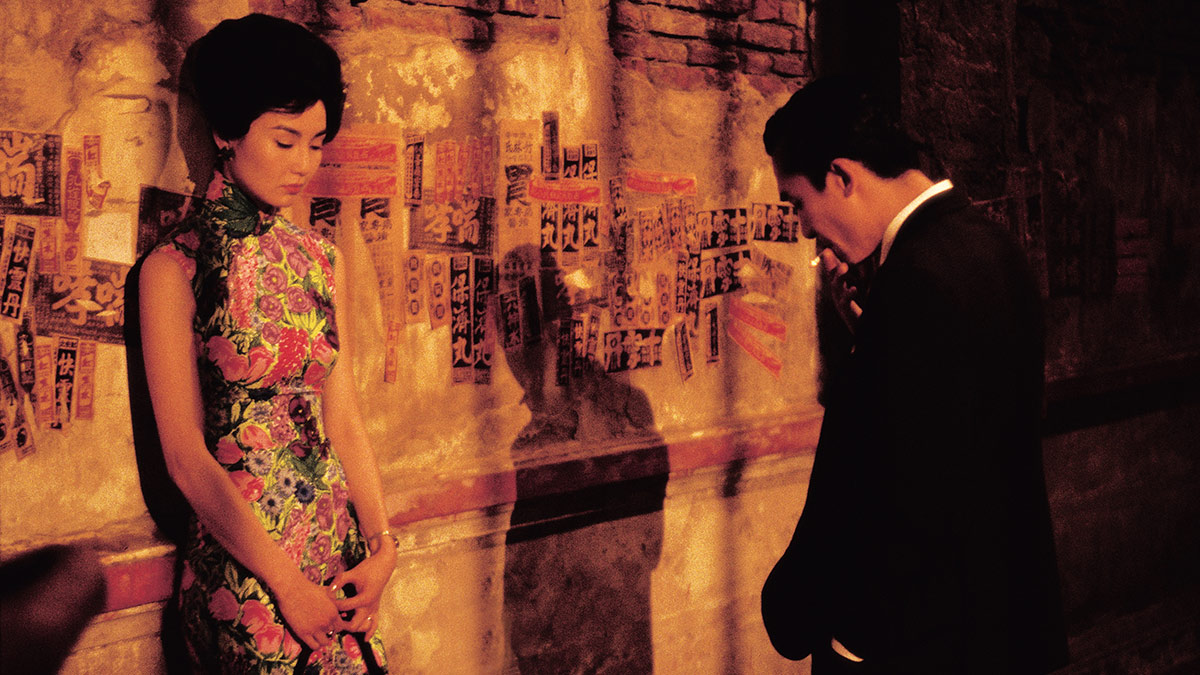
© 2000, 2009 Block 2 Pictures Inc. All Rights Reserved.
“In the Mood for Love” Ambiguous passage of time, ambiguous relationships, and the changing face of Hong Kong
2021.06.15
“In the Mood for Love” synopsis
Hong Kong in 1962. Mr. and Mrs. Chow (Tony Léon: The Professional ), The Journalist , and Mrs. Chan (Maggie Cheung), a company president's secretary, and her husband rent rooms, and they happen to live next door to each other on the same day. Chau and Mrs. Chan meet as neighbors and friends who share a lively apartment complex, but they soon discover that their partners are having an affair. The two, who were both betrayed, quickly become close friends and have many similar encounters. Chau, who aspires to be a novelist, asks Mrs. Chan for help with his writing, and the two eventually start having a secret meeting at a hotel.
Film director Wong Kar-wai manipulates the magic of time. `` Days of Being Wild '' (1990), ``In the Mood for Love'' (2000), and `` 2046 '' (2004), all set in the 1960s, a period that connects with his roots, are particularly vivid works.
Hong Kong in 1962. Mr. and Mrs. Chow (Tony Léon: The Professional ), The Journalist , and Mrs. Chan (Maggie Cheung), a company president's secretary, and her husband rent rooms, and they happen to live next door to each other on the same day. Chau and Mrs. Chan meet as neighbors and friends who share a lively apartment complex, but they soon discover that their partners are having an affair. The two, who were both betrayed, quickly become close friends and have many similar encounters. Chau, who aspires to be a novelist, asks Mrs. Chan for help with his writing, and the two eventually start having a secret meeting at a hotel.
“In the Mood for Love” preview
Index
- Wong Kar-wai's 10 years and 15 months
- Unforgivable love, its ambiguity
- In 1966 and 1997, “Suspended” in Hong Kong
- Confining a “temporary” secret to “eternity”
Wong Kar-wai's 10 years and 15 months
The work ``In the Mood for Love'' has a slightly complicated history. The name of Mrs. Chan, played by Maggie Cheung, is Su Lichen. This is the same name as McGee's own character in Days of Being Wild, the previous film in Kar-Wai's '60s trilogy. In 1960, when "Days of Being Wild" is set, a saleswoman falls in love with Yodi, played by Leslie Cheung, but two years later she wears a glamorous Chinese dress and is now in love with a married man. In other words, I entrusted it to him.
Kar-Wai says of the film, ``It's like a sequel to ``Days of Being Wild'', but it's not a sequel.'' However, in fact, although there is no direct connection between the stories of ``Days of Being Wild'' and ``In the Mood for Love'', in addition to Su Lichen's reappearance, Tony, who appeared in the final scene of ``Days of Being Wild'', The fact that Léon: The Professional is playing the lead role this time also highlights the relationship between the two films. ``Days of Being Wild'' was originally planned to be a two-part series, with Tony playing the lead role in the second part. However, due to circumstances, the second part was never produced.
"Days of Being Wild" preview
Kar-wai, whose style is to create a story through repeated reshoots during the filming process without deciding on the content of the script in advance, reflects on ``In the Mood for Love'' as ``It was the most difficult shoot of my career.'' It seems that he wanted to film a love story of mature adults, but the content of the film was decided based on Tony and Maggie's appearances, and Kar-Wai also confessed about his own work, saying, ``I don't even know how it will turn out.'' There is. Filming took 15 months to complete, with many scenes originally planned to be shot at a former military hospital in Kowloon, where the hotel scenes were filmed. Although filming was actually done at the hospital many times, much of the footage was not used in the main story.
The film was set from 1962 to 1966, but Kar-Wai has admitted that he originally intended the film to end with scenes from 1972. You can see how the story took many twists and turns during filming.
It has been 10 years since “Days of Being Wild”, the first film in the “60s Trilogy”. The shooting period for “In the Mood for Love” was approximately 15 months. In order to complete this work, Wong Kar-wai wandered through a period of ``suspension,'' so to speak, not knowing where he was heading. And just like Kar-wai, Chow and Mrs. Chan, who have fallen into an unforgivable love, are forced to spend a period of time in limbo, unsure of how long it will last.

